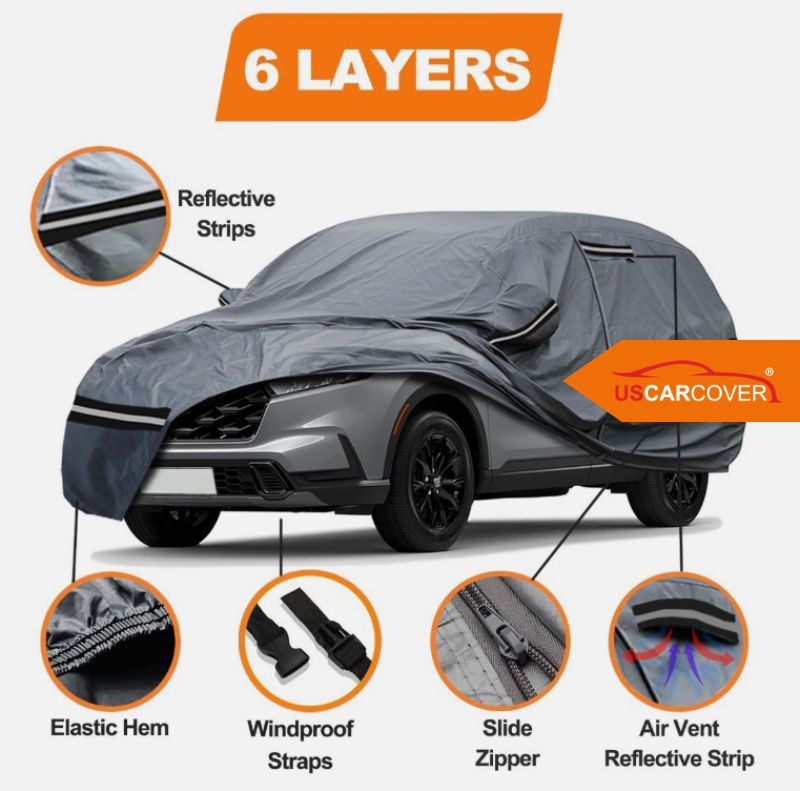
Honda car cover is not just a sheet to keep off dust. With the diverse climates across the United States, from the persistent rain of the Pacific Northwest to the harsh sun of the Sun Belt, a correct-mechanism Honda cover works like a second skin. It lets surfaces breathe, keeps them still, and prevents contact damage during both short and long parking. If you have ever parked a Civic, Accord, CR-V, HR-V, Pilot, Odyssey, or Ridgeline outdoors, you have likely opened the door to a hot cabin, a dashboard starting to dry or streak, glass marked by mineral rings, or fine swirls on paint along the A pillars and quarter panels. These signs rarely come from one big incident. They accumulate hour by hour through rainwater, UV, fine dust, tree sap, and even how a cover interacts with bodywork. This article goes straight to the pains of water, sun, heat, and surface aging, traces causes and consequences, then offers a solution with a Honda car cover that resists rain by beading and venting moisture, blocks UV, cools the cabin effectively, and preserves paint and interior over time.
Related Articles: Hillman car cover: preserve value and extend vehicle lifespan, reduce repair and maintenance costs
Damage mechanisms and hidden costs over time
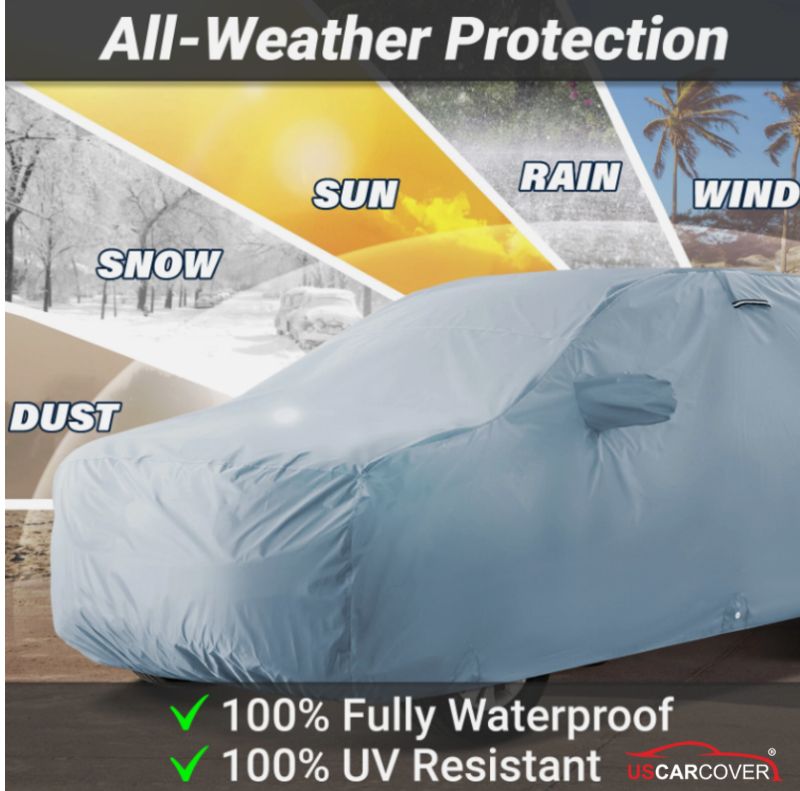
Annoyance often starts with small, ordinary moments. An overnight shower leaves mineral rings along glass edges. A midday sun turns the steering wheel too hot to hold and releases harsh plastic odors. A few weeks outside produce halo swirls that appear under inspection lights. Vinyl, leather, and plastic trims fade faster than expected. Four forces operate together. First is rain and condensation. When surfaces hit the dew point, water beads form. If they are pressed between the car and an airtight cover, they cause musty odors, rings on glass, and light corrosion along metal lips. Second is UV. UV-A and UV-B break polymer chains in plastics and vinyl, pull oils from leather, and accelerate clear coat oxidation, which leads to fading and brittleness. Third is heat. A hot cabin stresses adhesives, seals, and soft finishes, making them age faster. Fourth is fine dust. Even a thin layer, combined with micro motion from a loose cover, creates repeated friction that prints swirls.
The results are more than discomfort when you get in the car. They are seasonal bills: swirl correction, glass decontamination, conditioning leather and plastics, deodorizing, and even touch-up paint. The paradox is that the more you “fight fires,” the more originality can be lost. The durable answer is to cut damage mechanisms at the outermost layer by using an outdoor Honda car cover that beads water, breathes, reflects UV, uses a very soft liner, and fits custom to stay still in wind.
Related Articles: Graham car cover: long-term storage solution with ultra soft liner, recessed seams, and breathability
Rain resistance done right
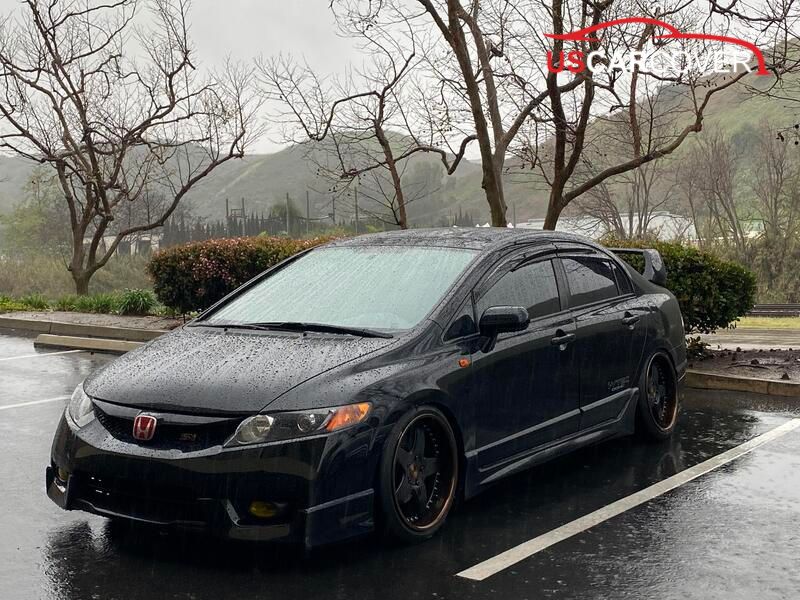
Instinct says to choose the most sealed material possible. For outdoor parking, airtight often builds a moisture greenhouse. After rain or at sunrise, surfaces reach the dew point and condensation appears. If the cover is a non-breathing membrane, vapor gets trapped between paint and fabric, pressing moisture against glass and metal edges for long hours. That invites musty smells, white rings on glass, and dull specks on metal trim.
A Honda car cover that resists rain correctly solves this with two mechanisms working together. First, the outer face is finished to bead water so droplets round up and roll down along body slopes, which shortens wet time on the surface. This is the practical difference between water resistance and plastic-sheet waterproofing that traps moisture. Second, a micro-porous, breathable core lets vapor diffuse upward, so the underside stays dry by days and weeks, not dry for a few hours and damp again later. In Florida’s quick showers, droplets roll off fast. In the Northwest’s long drizzle, the breathing core prevents moisture buildup. In dusty desert winds, a beading outer face resists becoming soaked and heavy. You see the result with your eyes: fewer water frames on glass, brighter chrome and trim for longer, and a cabin that does not smell damp after rainy nights.
Related Articles: How to choose a GMC car cover for Urban areas, the Sun Belt, the Snow Belt, coastal regions, and high-wind plateaus
Strong UV protection

UV is quieter than rain but more relentless. In the Sun Belt, a few hours at noon can spike dashboard temperatures. UV at that moment breaks polymer chains and pulls natural oils out of surfaces, leaving plastics faded, vinyl brittle, leather dry, and clear coat dulling with time. The most effective UV “block” is not inside the cabin. It starts at the outer face of the cover. A Honda car cover with a UV-reflective, light-colored outer face reflects a significant portion of solar energy so less reaches paint and interior. By pushing UV away at the outer surface, you extend the life of sensitive components: dashboard, door panels, steering wheel, seats in leather or cloth, headliner, and even badges and plastic trims.
The welcome side effect is lower heat absorption. Even when you cover for just one to three hours at midday with a half cover over roof and glass, cabin temperatures drop noticeably. Over time, emergency leather rescues, heavy dressings to mask fading, and harsh deodorizing become less frequent because you have reduced the root cause.
Cooler cabin
Cabin heat comes from two channels: sunlight passing through glass and dark surfaces absorbing heat. A Honda car cover with a light, reflective outer face reduces both. More sunlight is reflected away, and the fabric itself stores less heat. The difference is clear when you return after lunch. Armrests, steering wheel, seats, belts, and cabin air feel less harsh. On the technical side, lower temperatures also reduce thermal stress on adhesives, seals, and soft coatings, which slows premature aging and cracking. This is why many owners in high-sun areas add a Honda half cover for short midday stops. It directly shields the windshield and roof, where most heat enters.
Related Articles: Geo car cover: reduce maintenance, protect 90s dashboards and plastics, and preserve resale value
Keep paint and interior lasting longer
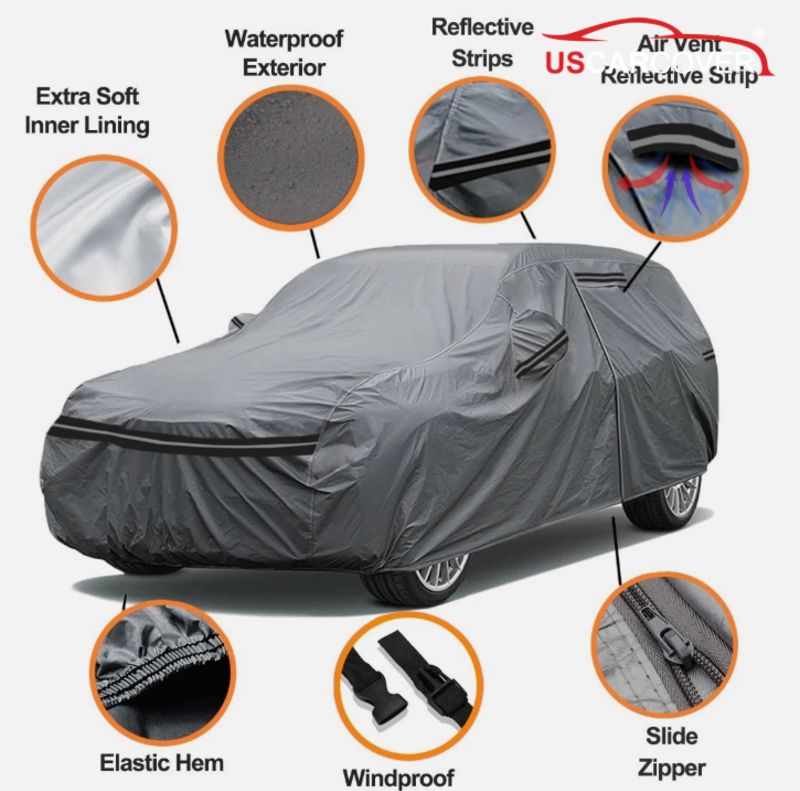
People often search for a single “miracle” for paint and interiors. The sustainable secret is to reduce friction, moisture, and heat. A breathable Honda cover with an ultra soft liner and a custom fit addresses all three in each install and removal. The ultra soft liner makes contact cushioned rather than abrasive. The same push or drag becomes a gentle glide. The custom fit suppresses air pockets at the nose, A pillars, or rear glass, so the cover does not balloon in light drafts and dust cannot travel back and forth on paint. The micro-porous core lets the surface breathe, venting vapor upward so the underside stays dry by days and weeks, which limits glass rings and cabin odors. When these three principles become habit, you naturally extend intervals between swirl correction, glass decontamination, and emergency interior conditioning, while preserving originality that matters at resale.
Why Honda design demands custom fit
Each Honda line has its own geometry and wind-exposed features. Civic and Accord have broad windshields. CR-V and HR-V and Pilot stand taller with large liftgates. Odyssey is a minivan with sliding doors and long glass areas. Ridgeline has a bed and a shark-fin antenna on the roof. Many trims carry roof rails and ADAS cameras near the windshield. Generic sizes tend to leave extra fabric at the nose or rear glass, which creates air pockets that puff with wind. Mirror pockets that sit wrong force you to pull sideways while installing, which introduces friction.
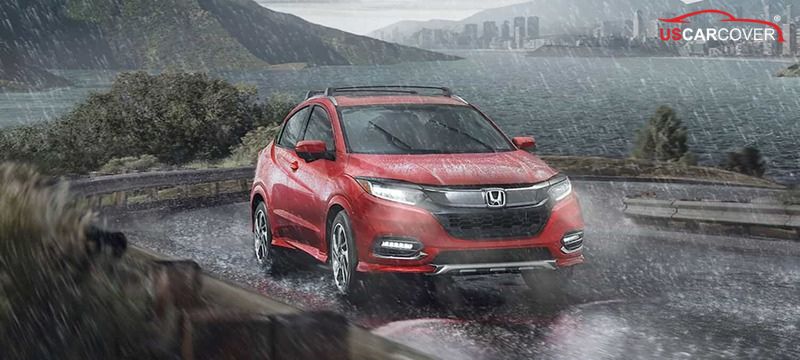
A custom-fit Honda car cover targets each small but decisive detail: mirror pockets in the exact location and size, tail drop that matches sedan, hatchback, SUV, minivan, or pickup profiles, allowances for the shark-fin antenna, roof-rail compatibility, elastic hems that hug edges, and optional multi-point underbody anchors. Once geometry locks, the cover stays still, the soft liner works as intended, and recessed seams have no chance to print faint lines over time. If your car has PPF or ceramic coatings, the benefits double. A soft liner plus a tight fit cuts repetitive friction, while coatings add slickness and contamination resistance. They complement each other.
Related Articles: Genesis car cover: extend vehicle lifespan by blocking dust, leaves, UV, and heavy rain
Choose Honda car cover by U.S. climate and parking habits

Buy local in spirit. Choose a cover for the place you live and the way you park. One setup never wins everywhere.
Urban with many trees: tree sap, bird droppings, and fine dust are the daily trio. Choose a Honda cover that is light, compact, quick to handle, with a soft liner and a close fit so you will actually use it every day. Dirt and sap rarely get a chance to settle if covering becomes second nature.
Sun Belt with harsh sun: choose an outdoor Honda car cover with strong UV reflection and a light tone, plus a breathing core so moisture does not accumulate after a quick shower. If you often park briefly at noon, a half cover is a direct sunlight filter for the windshield and roof.
Snow Belt with snow, rain, and road salt: the hardest part is extended wet and salty conditions. You need strong water beading so droplets roll quickly, a micro-porous core so vapor diffuses outward, and multi-point anchoring so the cover stays steady. Glass prints fewer rings, metal lips dull less. At season end, rinse off salt, air dry the cover completely, then store it.
Coastal with salty air: the common mistake is an airtight material that presses salty moisture against surfaces. Choose a breathable Honda cover and lightly shake the surface each time you remove it so you do not carry salt into the storage bag. Chrome keeps its shine longer, glass stays clearer, and the cabin avoids damp odor.
High-wind plateau: wind drives micro vibration. Custom fit, recessed seams, soft hems, and underbody anchors keep the cover still and eliminate air pockets. When ballooning is gone, dust loses its chance to abrade paint.
Related Articles: Freightliner car cover: convenient and durable, snow resistant, UV resistant, rain resistant, effective tractor protection
FAQ
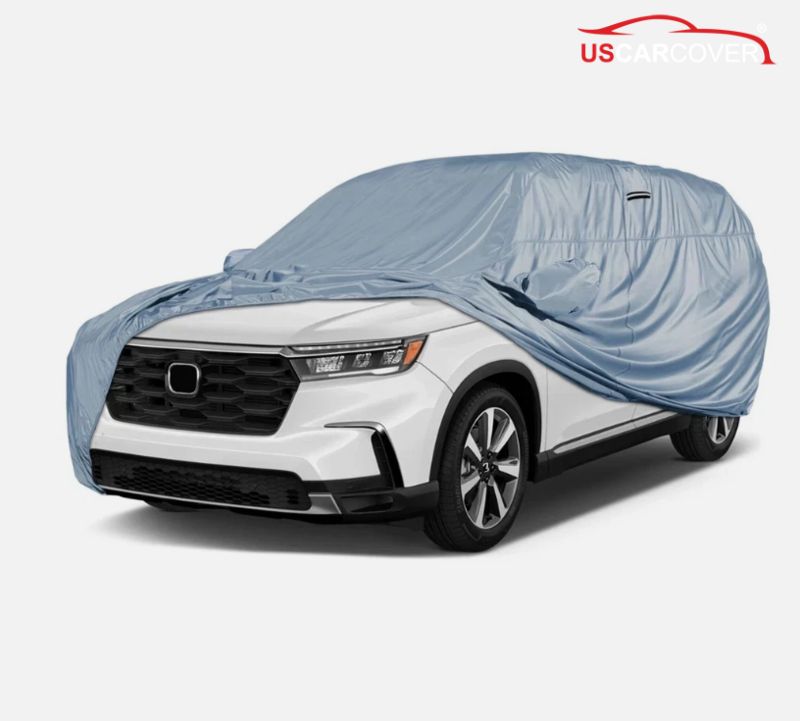
Does a breathable cover let rain soak into the car?
- Breathability lets vapor move upward from below. The outer face is finished so water beads and rolls off. In very heavy rain, water can sit on the fabric surface, but the underside stays far drier than leaving the car bare.
Can I cover the car while it is still wet?
- Not for long parking. Let the surface dry, then cover. If the cover becomes wet, air dry it completely before storage to avoid odor and mildew.
Will a cover scratch paint?
- A Honda custom-fit cover with a very soft liner will not scratch if you handle it correctly: remove large debris before covering and avoid dragging sideways to adjust.
Should I choose a full cover or a half cover?
- A full cover is best for overnight or extended parking. A half cover suits short stops and focuses on cooling the cabin and shielding roof and glass.
Related Articles: Compact and durable, rain resistant, strong UV protection, effective cabin cooling
Where to buy a Honda car cover for “getting it right the first time”
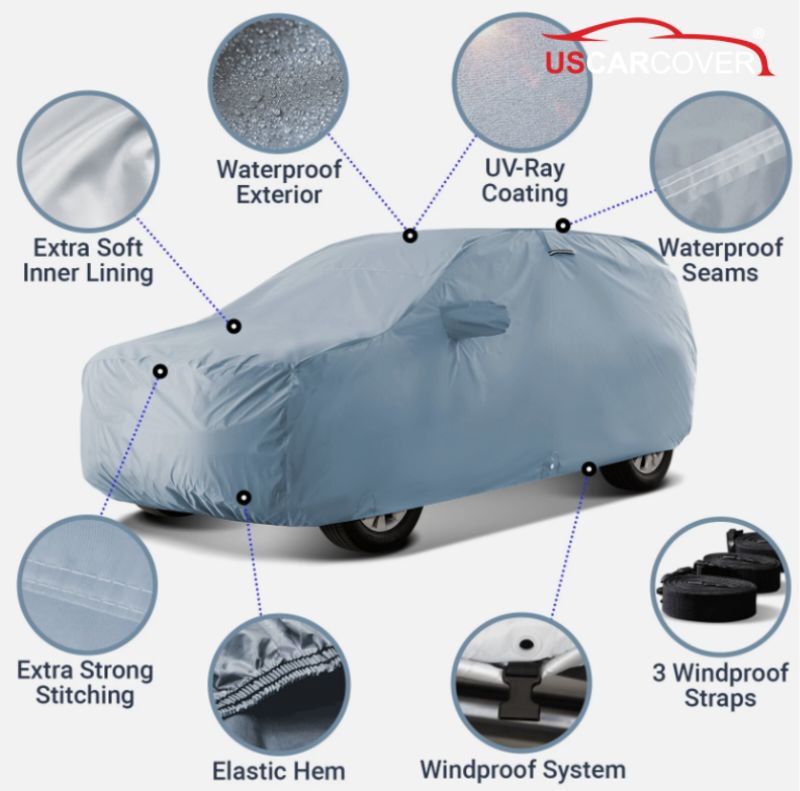
A cover delivers its value only when you use it daily without overthinking. That comes from a seller who understands U.S. climates and parking habits, offers custom-fit forms by model and year, clearly separates indoor and outdoor options, and explains in plain language how water beading, breathability, soft liners, UV reflection, recessed seams, and anchoring work together. At US Car Cover, you can search by Honda model, choose indoor for humidity-controlled garages or outdoor for carports and open lots, and get climate-specific advice from the Sun Belt and Snow Belt to coastal and high-wind regions. Once the form is correct, the liner soft enough, the core breathing, and the outer face shedding water well, every install and removal is quick, tidy, and clean. Habit forms naturally, and protection improves day by day.
If the value of a correct-mechanism Honda car cover had to be wrapped into four pillars, they would be rain resistance through beading and ventilation, strong UV protection to slow surface aging, cabin cooling to reduce material stress, and lasting paint and interior through cushioned contact, still fit, and a surface that breathes. When you turn covering into a daily habit, the car ages slowly. Glass shows fewer rings, paint gathers fewer swirls, chrome stays bright, and interiors keep their color. You trade fewer emergency jobs like polishing, decontaminating, and heavy conditioning for the peace of mind of lifting the cover and seeing your Honda look as fresh as yesterday. It is a small, smart investment that keeps your car ready for every drive, rain or shine.
